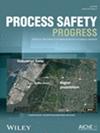Adaptive thresholds-based leak detection using real-time transient modeling of two-phase flows
IF 1
4区 工程技术
Q4 ENGINEERING, CHEMICAL
引用次数: 0
Abstract
Pipelines are widely regarded as the most cost-effective mode of transportation for oil and gas, particularly when it comes to covering long distances. Regrettably, pipelines are not impervious to accidents, which can result in colossal material damage and fatalities. As the demand for oil and gas rises, so does the need for pipelines. Therefore, issues in pipeline malfunctions cannot be overlooked. Leakage and blockage are the two main faults in pipelines that lead to pipeline incidents if not addressed timely. Detecting pipeline leaks is a major hurdle for industry, and various techniques have been developed to tackle this. This article focuses on the modeling of leakage detection in pipelines in two-phase transient flows. Initially, OLGA, a multiphase software, is used for simulating the transient flows in a black oil case study. A leak was induced after 30 min of the simulation and leak cases were designed with varying parameters. Using the simulated data of mass flow rate, and pressure at the inlets and outlets, the model will be identified. The adaptive thresholds-based model was able to predict the leaks accurately. The performance of the leak detection model was analyzed. The model was able to detect leaks of 2%–10% sizes successfully.利用两相流实时瞬态建模进行基于阈值的自适应泄漏检测
管道被广泛认为是最具成本效益的石油和天然气运输方式,尤其是在长距离运输方面。遗憾的是,管道并非不会发生事故,这些事故可能会造成巨大的物质损失和人员伤亡。随着石油和天然气需求的增加,对管道的需求也在增加。因此,管道故障问题不容忽视。管道泄漏和堵塞是管道的两大主要故障,如果不及时处理,就会导致管道事故。检测管道泄漏是工业领域的一大难点,目前已开发出多种技术来解决这一问题。本文重点介绍两相瞬态流中管道泄漏检测建模。首先,在黑油案例研究中使用多相软件 OLGA 模拟瞬态流。模拟 30 分钟后诱发泄漏,并设计了不同参数的泄漏案例。利用质量流量、入口和出口压力的模拟数据,确定模型。基于自适应阈值的模型能够准确预测泄漏。对泄漏检测模型的性能进行了分析。该模型能够成功检测出 2%-10% 尺寸的泄漏。
本文章由计算机程序翻译,如有差异,请以英文原文为准。
求助全文
约1分钟内获得全文
求助全文
来源期刊

Process Safety Progress
工程技术-工程:化工
CiteScore
2.20
自引率
10.00%
发文量
99
审稿时长
6-12 weeks
期刊介绍:
Process Safety Progress covers process safety for engineering professionals. It addresses such topics as incident investigations/case histories, hazardous chemicals management, hazardous leaks prevention, risk assessment, process hazards evaluation, industrial hygiene, fire and explosion analysis, preventive maintenance, vapor cloud dispersion, and regulatory compliance, training, education, and other areas in process safety and loss prevention, including emerging concerns like plant and/or process security. Papers from the annual Loss Prevention Symposium and other AIChE safety conferences are automatically considered for publication, but unsolicited papers, particularly those addressing process safety issues in emerging technologies and industries are encouraged and evaluated equally.
 求助内容:
求助内容: 应助结果提醒方式:
应助结果提醒方式:


